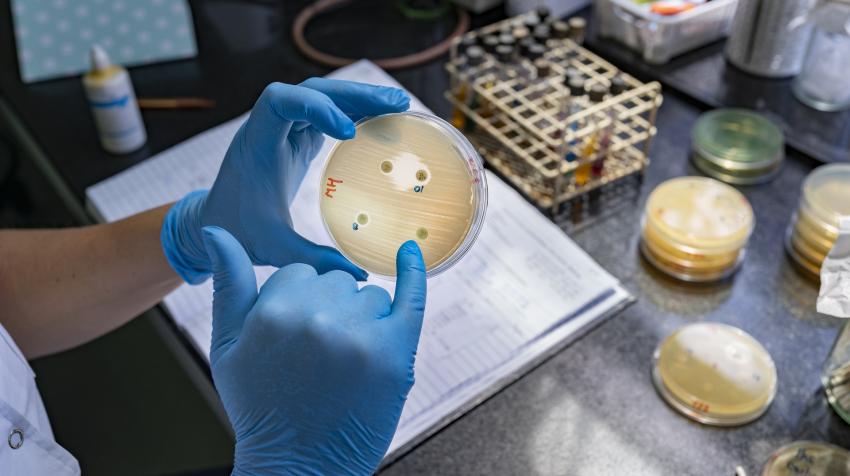Diplomatic Correspondent
Published:2024-09-25 04:53:31 BdST
UN High-level meeting on antimicrobial resistance sparks hope
World leaders are expected to adopt a political declaration to advance stronger progress in addressing the antimicrobial resistance (AMR) as the UN General Assembly will convene a high-level meeting in New York on Thursday.
The meeting themed on "Investing in the present and securing our future together: Accelerating multi-sectoral global, regional and national actions to address antimicrobial resistance" will be the second such initiative after 2016.
Final draft text of the political declaration, which has been submitted to all the heads of governments worldwide, will be the basis of all discussions at the global meet.
The meeting raises hope that world leaders will collectively acknowledge the looming threat that AMR poses to global health.
“Antimicrobial resistance (AMR) is currently one of the greatest global threats. It results in millions of deaths, long-lasting disabilities and increased health care costs. It also has severe impacts on livelihoods, threatens food security and results in loss of animal lives,” Dr Jean Pierre Nyemazi, acting director, Global Coordination and Partnership Department, and Director of Quadripartite Joint Secretariat on AMR at the WHO, said in a webinar.
AMR occurs when bacteria, viruses, fungi, and parasites evolve over time and stop responding to medications. This makes infections harder to treat and raises the risk of disease spread, severe illness, and death. Consequently, medicines become ineffective, allowing infections to persist in the body and increasing the likelihood of transmission to others.
“AMR has been an issue that has been documented since the first antibiotic was developed back in 1940. We knew that antimicrobial resistance was going to be a big issue, but I would say that big political attention started back in 2014 when we had the first Ministerial Conference on AMR. In 2015 we had the Global Action Plan to address AMR which was a critical milestone as well. In 2016 we had our first-ever United Nations General Assembly High Level Meeting on AMR (UNHLM on AMR). The 2016 UNHLM on AMR was a milestone and drove much of the key results that we can see today in AMR response, Dr Jean Pierre Nyemazi said.
According to the government’s disease monitoring agency, Institute of Epidemiology Disease Control and Research (IEDCR), antibiotic resistance in Bangladesh has increased by 11% over the past five years from 2017 to June 2023.
Bangladesh has national strategies to combat this menace. However, implementation remains a challenge. Anyone can buy antibiotics without any prescription.
“We urge the new leadership in Bangladesh to take stronger positions at the upcoming UN meeting of world leaders on 26th September on AMR and advance more concrete actions on the ground against AMR – one of the top-10 global health threats today,” Shobha Shukla, Chairperson, Global Antimicrobial Resistance Media Alliance (GAMA), said.
She said the final draft of the political declaration for world leaders who will meet at the meeting on Thursday is more ambitious than the 2016 Political Declaration of first-ever UNHLM on AMR.
“But considering the progress made on AMR and growing recognition of the interconnectedness of the AMR pandemic – which mandates an intersectoral response – the draft targets in the political declaration are less ambitious.”
For instance, she said, reducing AMR mortality by 10%, reducing inappropriate human antibiotic use by 20%, and reducing inappropriate animal antibiotic use by 30% by 2030 – lack ambition if we are to prevent AMR. How can governments end TB by 2030 (one of the SDG goals) without ending 100% drug-resistant forms of TB?
“If we can make early and accurate diagnosis a reality for everyone in people-centred and rights-based manner and linkage to right treatment with social support and care, and ensure infection prevention and control at all levels, we will also help advance progress on universal health coverage and other SDG goals and targets,” she said.
The political declaration recognized that antimicrobial resistance is one of the most urgent global health threats and development challenges and demands immediate action to safeguard our ability to treat human, animal, and plant diseases, as well as to enhance food safety, food security and nutrition, foster economic development, equity and a healthy environment, and advance the 2030 Agenda for Sustainable Development Goals.
The document also suggested commitment to sustainable financing and budgeted activities, as identified in the national action plans on antimicrobial resistance, for their effective implementation, in accordance with national contexts.
Quadripartite organizations are also united to address AMR using One Health approach. These include: the Food and Agriculture Organization of the United Nations – FAO, United Nations Environment Program – UNEP, World Health Organization – WHO, and World Organization for Animal Health – WOAH.
“As new antibiotics were discovered, it is important to note how fast resistance was reported soon after their discovery. For instance, Sulfonamides were discovered in the 1930s and within 10 years, there were Sulfonamide-resistant microbes. In the 1940s, penicillin was discovered, and resistance was reported in the next few years. Research pipeline for new antimicrobials is drying up. That is why we need stronger commitments at the UNHLM on AMR to save our medicines,” Dr Yvan JF Hutin, Director, Department of Control, Surveillance and Prevention of Antimicrobial Resistance, WHO, said.
Unauthorized use or reproduction of The Finance Today content for commercial purposes is strictly prohibited.


